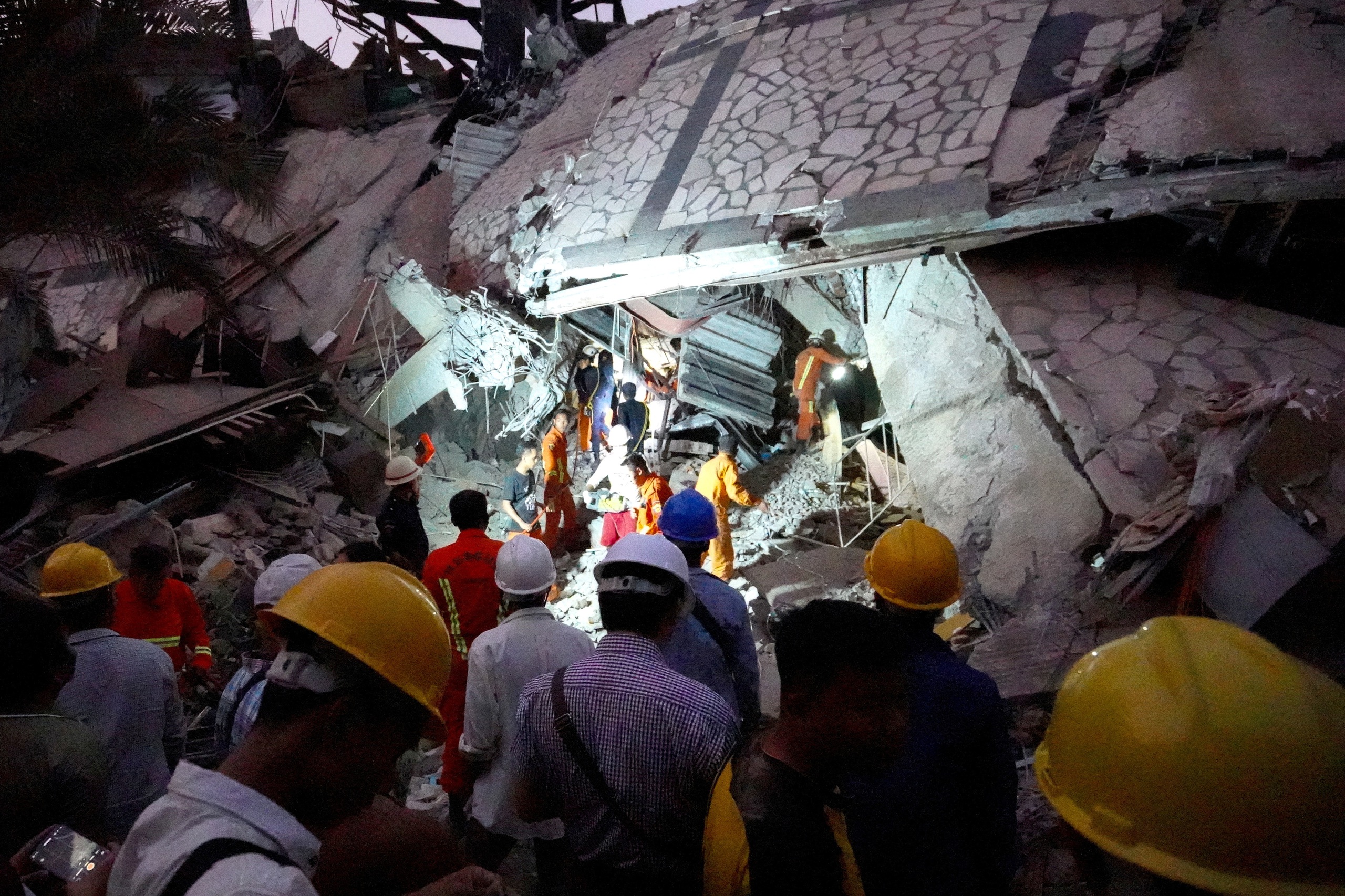Earthquake survivors in Mandalay, Myanmar’s second-largest city, have shared with Tuoi Tre (Youth) newspaper haunting accounts of collapsed homes, mass casualties, and a region struggling to cope with the aftermath of a deadly 7.7-magnitude quake that rocked Myanmar on Friday.
Tuoi Tre on Sunday managed to reach two survivors, whose names have been changed for safety reasons, despite widespread power and Internet outages.
Nandar Hlaing, a resident of Wundwin Township in the Mandalay Region, close to the quake’s epicenter, said the first tremor struck as she was preparing lunch.
She described the moment the earthquake hit as terrifying, likening it to a bombing.
“I thought we were getting bombed and we would all be dead,” she recalled.
“In two minutes, there was nothing left to take, nothing to get hold of, and no one was able to save anyone.
“The earthquake was not like it was rumbling. It’s like pulling up and down. I thought my house would be torn apart.”
She elaborated the second quake was milder, but the third was overwhelming.
The woman witnessed buildings collapsing and people trapped under the rubble.
“I heard a chili warehouse worker was dead,” she said.
She described this quake-hit worker as a reliable man in Thegon Township, where more than ten ancient structures collapsed.
A government-run textile and garment factory in Wundwin crumbled while workers were inside, with the exact casualties remaining unconfirmed.
She also noted the severe damage to infrastructure, including the cracked, impassable roads and the destruction of a fresh water factory.
“There is no water in our town. Toe Nayar water factory was completely damaged and there’s nothing left,” she said.
She estimated more than 20 people had died in Wundwin, excluding potential casualties at the textile factory.
“We have to cremate seven people in our town right now. Every street has a funeral. There were small earthquakes last night too," the survivor said.
“Everywhere was dead silent and [everyone's] afraid of another earthquake. We had to live in caves and sleep."
Rescue efforts only began on Saturday, she said, and were carried out by villagers, not trained teams.
“They were recovering the dead bodies till 6:00 or 7:00 pm last night. I heard the recovery is still ongoing in the textile and garment factory.”
Aung Ko Ko, another resident in the Mandalay Region, witnessed the collapse of mountainous terrain and the destruction of monasteries in the Sagaing area, where he saw numerous fatalities.
“The first earthquake shook the lakes. There was another tremor after one or two minutes. The second tremor was stronger than the first. It was happening every five minutes,” he recounted.
The entire Sagaing mountain range collapsed. Monasteries were completely destroyed and lots of people were trapped inside, the eyewitness continued.
The old Sagaing Bridge fell into the river, while the newer one was also impassable, with one end sunken and the other tilted.
The traffic disruption caused by the bridge damage forced the locals to rely on ferries for travel.
He and others pooled their remaining money to pay for the ferry operator.
As of 10:00 pm on Saturday (Vietnam time), Myanmar’s military government reported at least 1,644 deaths, more than 3,400 injured, and 139 people missing.
However, the U.S. Geological Service's predictive modelling estimated Myanmar's death toll could exceed 10,000.
Myanmar’s civilian National Unity Government has reported the destruction of over 80 historic buildings, including pagodas, Buddhist temples, monasteries, and mosques in Mandalay, Sagaing, Naypyitaw and Bago regions, and Shan State.
Search and rescue operations remain ongoing in this Southeast Asian nation.
Vietnam’s rescue teams consisting of military and police personnel are expected to arrive in Myanmar on Sunday to aid in recovery efforts.
Like us on Facebook or follow us on X to get the latest news about Vietnam!





















































